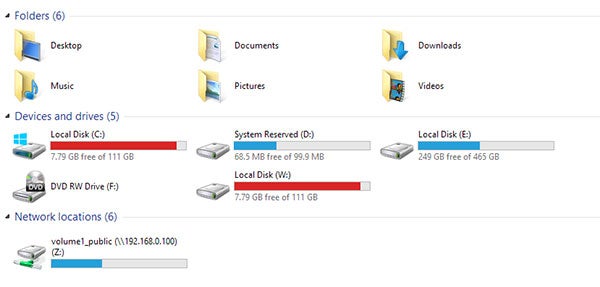How To Copy Current Blog To Local Map Host
How to map a local folder to a drive letter in Windows
Mock network environments and map hidden paths for easy access
Have you ever wanted to create a drive letter mapping within your local system under Windows? Usually the mappings are reserved for network paths, but it can be useful for development (or even just as a shortcut) to map a local path to a drive letter.
Mapping network paths to drive letters has been a familiar task in corporate life. You've got your report server to access, accounting has their own NAS, there is a backup server, and so on. These handy shortcuts keep you from having to navigate down a long tree of folders to reach commonly used resources, wherever they are on your network. On windows, you can get the same functionality for local resources as well.

To map a path to a drive letter, you can use either the subst or net use commands from a Windows command line. The main difference between the two is that subst expects the location to always be available. If for some reason that location can't be found, it will try desperately to reconnect at the expense of your computers performance. net use on the other hand is more fault tolerant. When a mapped path appears to be disconnected, it will gracefully disable that mapping until you try to access it again, at which point it will attempt to connect again. More detail can be found on stackexchange.
Map a drive with subst
To create a new mapping:
subst x: C:\Folder\Example
To remove a mapping:
subst x: /D
Map a drive with net use
net use x: \\localhost\c$\Folder\Example
Why is this useful you might ask? For me it's useful when I need to mimic a client's environment that I don't have access to during development. If I know a resource is going to be on the W: drive, I can create a W: drive and map it to a local folder. It's also useful for hard to access file system locations, such as the hidden AppData directory.
This story, "How to map a local folder to a drive letter in Windows" was originally published by ITworld .
Matthew Mombrea is a software engineer, founder of Cypress North, and a technology enthusiast.
The opinions expressed in this blog are those of the author and do not necessarily represent those of ITworld, its parent, subsidiary or affiliated companies.
Copyright © 2014 IDG Communications, Inc.
How To Copy Current Blog To Local Map Host
Source: https://www.computerworld.com/article/2694895/how-to-map-a-local-folder-to-a-drive-letter-in-windows.html
Posted by: cookboun1947.blogspot.com

0 Response to "How To Copy Current Blog To Local Map Host"
Post a Comment